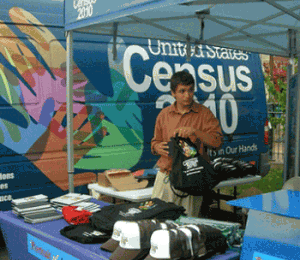
The first glimpse of the 2010 Census Data about a month ago revealed the obvious, states gaining congressional seats were those whose populations were fueled by growth in the Latino population. Despite this fact, it remains uncertain how much representation Latinos will actually gain in effect.
The country saw an increase in population by 10% in the last decade, but following this announcement talk mostly centered around reapportionment.
“Latinos are driving the very growth and regional population shifts that determined the decennial distribution of Congressional seats,” Sylvia Manzano, a Latino Decisions contributor, writes in her article Latinos Make their Mark: Demographics, Destiny and Reapportionment.
Manzano says even though the US Census Bureau has yet to publicize specifics on ethnic and racial data, the eight states that gained congressional seats can attribute this to the growth in the number of Latinos in each state.
“The 2010 ethnic and racial composition data are not yet public, but comparing 2000 and 2009 Census data it is evident that congressional delegation growth is attributable to Latino-specific population growth in these states,” she said.
Those states and the number of seats each picked up are as follows: Texas gained four seats, Florida two, Arizona, Nevada, Utah, Washington, Georgia and South Carolina each add one.
The Latino population rose elsewhere also, with 35 states seeing their numbers double. The population increases in Louisiana, Rhode Island and Michigan were solely based on Latino growth since each actually had a net loss of non-Latinos but was balanced out by the Latino increase.
“With all of these details in mind, it is fair to say that all new districts are Latino districts,” says Manzano.
The US Census Bureau takes into account every resident regardless of age or citizenship status, but Manzano says this doesn’t necessarily mean increased representation for the very population that fueled reapportionment, Latinos.
“Elected officials, no matter their office, are charged with representing all of their constituents, not just voters or contributors,” she said. “If democratic (small “d”) representation is working as it should, then Latinos should see their preferences on a broad range of issues increasingly reflected in legislation and public policy. Alas, all is not so straightforward in Latino American politics.”
About one-third of all Latino American citizens are too young to vote and citizenship status prevents another 12.8 million from voting. Manzano says that combined with the anti-Latino rhetoric and policy agendas of the last few years, she fears the increase in the Latino population may not translate into substantive representation.
“It would be a horrible irony to see states adding congressional seats because of Latino growth, only to design districts and/or elect representatives with legislative agendas antagonistic to Latino interests in the state,” Manzano said. “Once states have re-drawn their new districts, it will be worth revisiting how Latinos factored into deliberations and the prospects for increased representation.”

Recent Comments